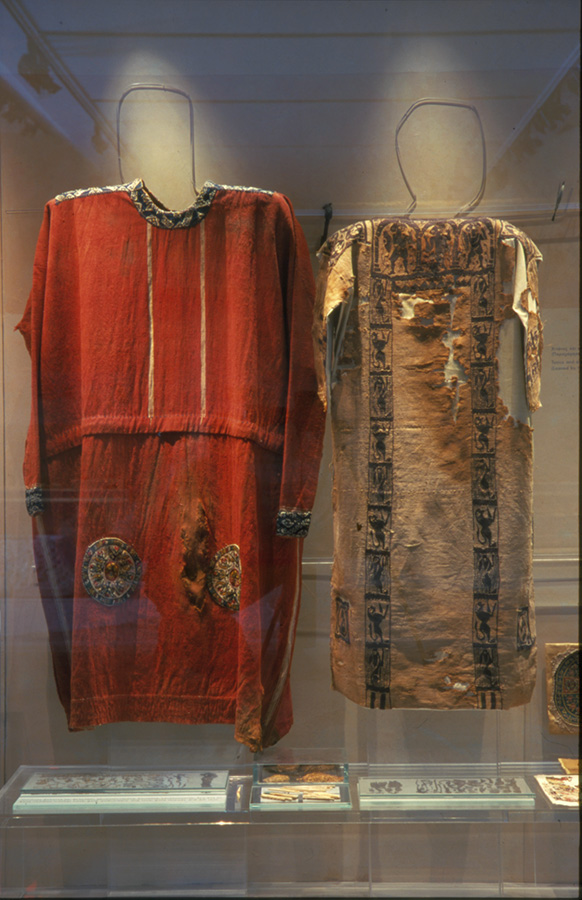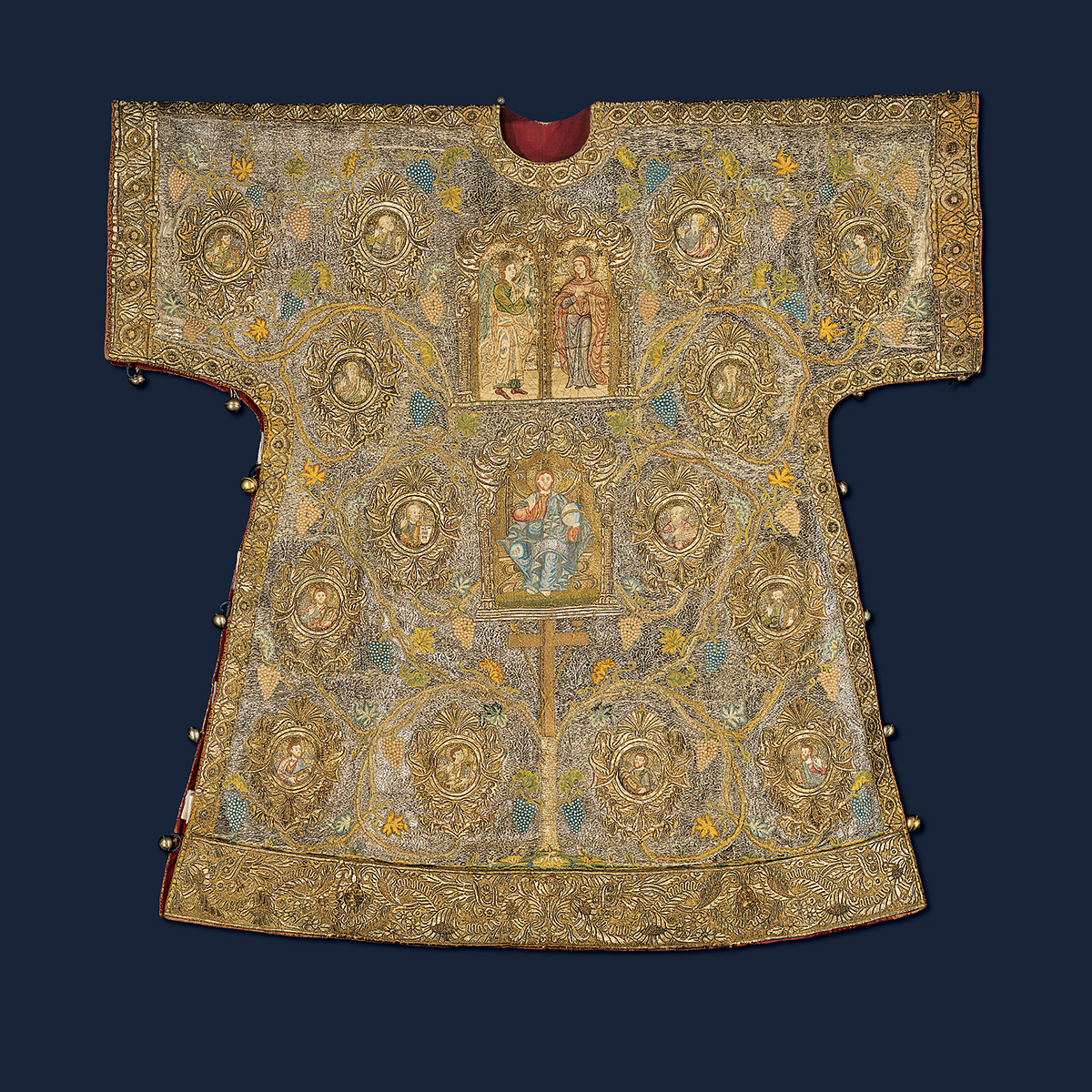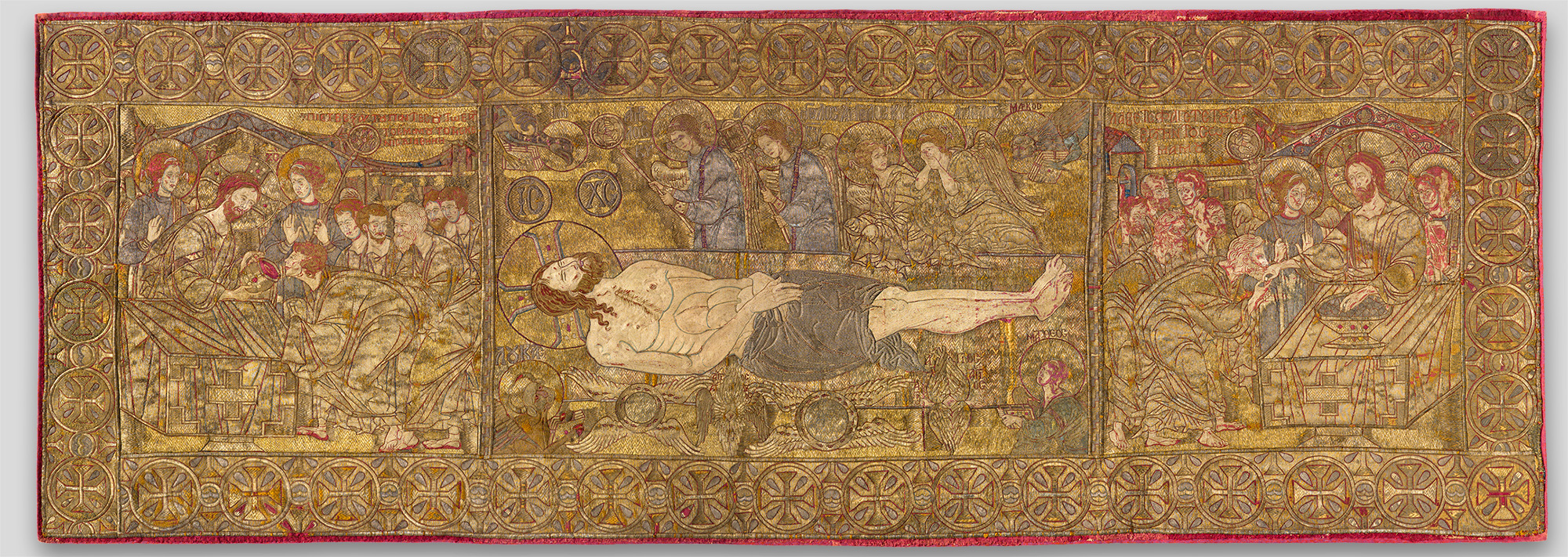
Chiton (tunic)
Woollen, dyed red, tunic with sleeves. It is decorated in the area around the neck and partially in the area of the shoulders. The decoration is composed of a band, in which white geometric shapes are shown against a black background, while on the cuffs of the sleeves a band has white lozenge motifs, which are also shown against a black background. The garment, at the height of the knees, is adorned with two patches in circle shape.
Tunics were the most popular garment in the area of the Eastern Mediterranean in late antiquity and were made of linen or wool. Garments until the Early Christian era had no sewing and were worn with the help of belts, buckles and pins. Cutting and sewing are practices which experienced wider spread in the Mediterranean area after the 7th century.
Code
ΣΔ 1/20
Type
Tunic
Chronology
5th-7th c.
Dimensions
Height 117 cm; width 100 cm
Material of Construction
Wool
Origin
Egypt (long term loan of the Benaki Museum)





